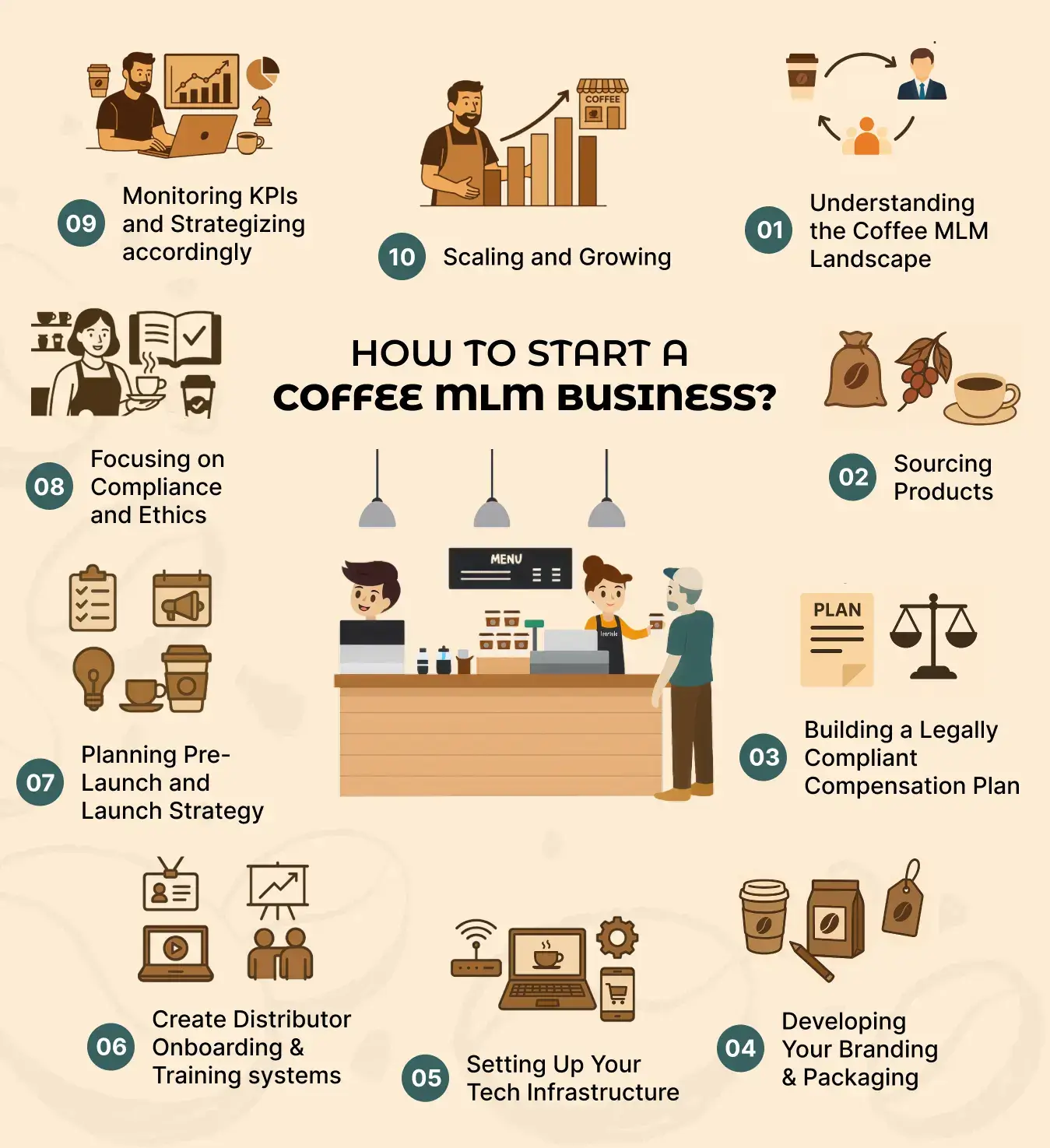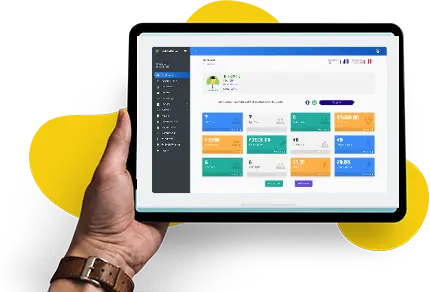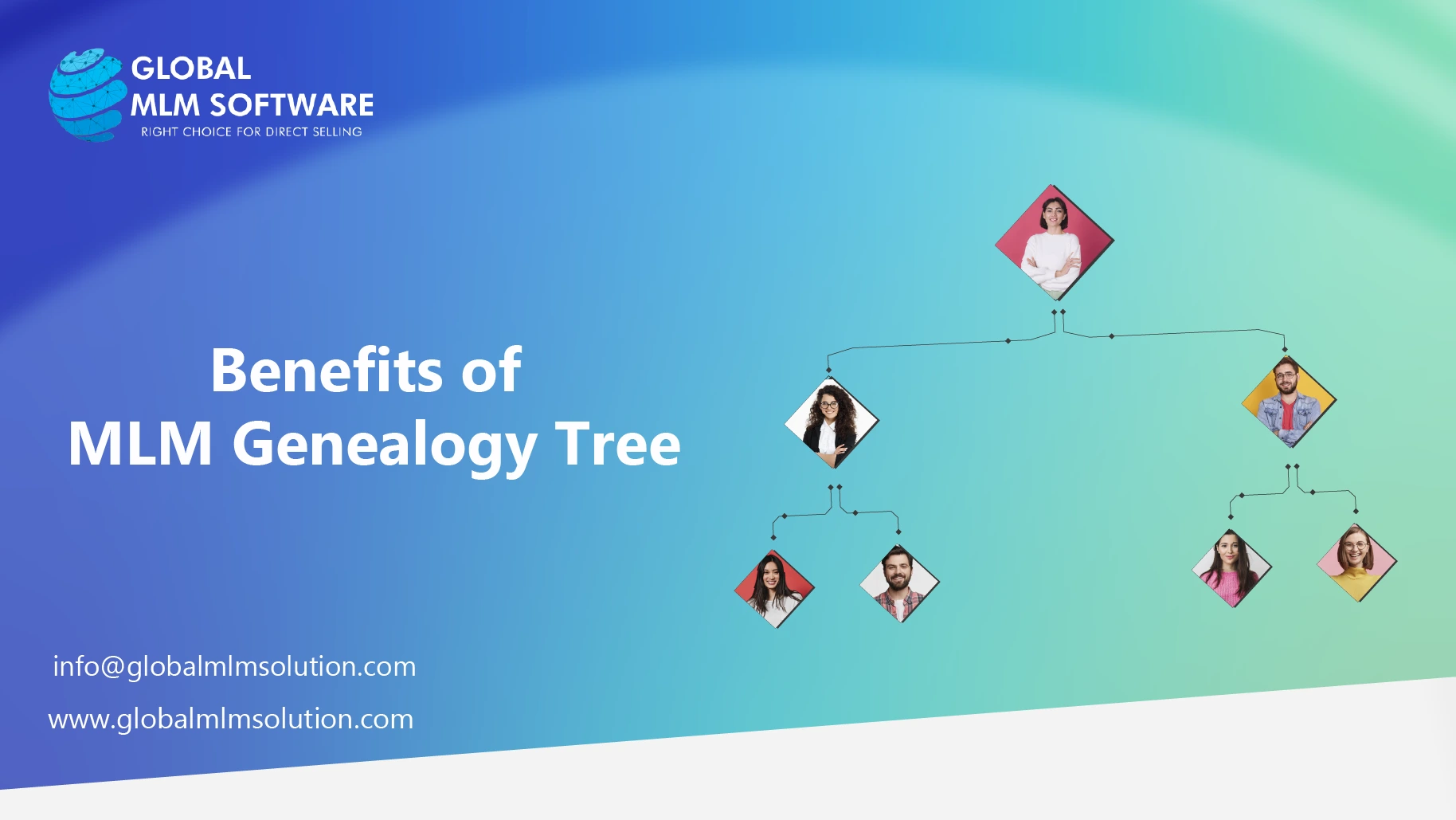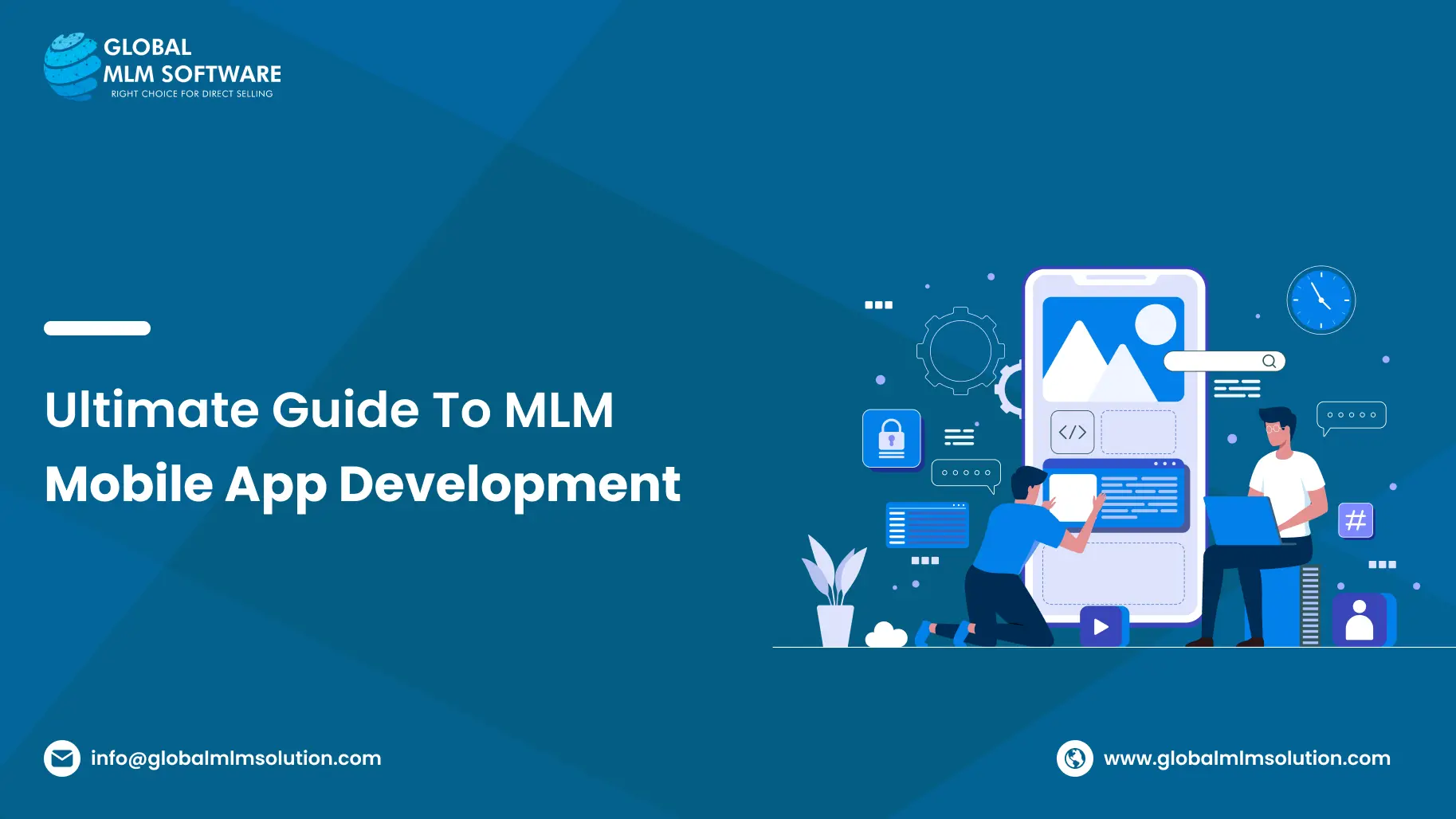Coffee has quickly become one of the most popular product categories in the MLM world. You would have already seen companies such as Organo and Java Momma making millions.
It's not just a beverage anymore. Today, coffee is a lifestyle-forward, emotionally engaging product with a huge market share.
Statista reveals that the global coffee market is worth $96.45 billion in 2025, and around $12 billion of it is generated in the United States alone.
If you’re serious about building your own Coffee MLM business, you’re in the right place. This article is your step-by-step guide to help you get started. It covers everything from product sourcing to compensation plans. Read on.
This Article Contains:
What is a Coffee MLM Business?
A Coffee MLM business is a model where you sell coffee through a network of independent sellers, usually called distributors. They employ various methods to sell products, mostly through word-of-mouth and personal connections.
This model provides you with many advantages. You don’t have to employ a sales team or spend huge money on marketing. Your distributors will take care of the sales, and you only have to pay them when they actually sell.
Moreover, the recruiting will also be handled by your distributors. They will build a team of downline members and train them to make sales. They will also earn bonuses and rewards based on their performance.
While your distributors handle sales and recruiting, your job is to support them. That can be done by providing:
Product training
Marketing materials
Ecommerce storefront to manage their business
Let’s take the case of Java Momma, a coffee MLM company that focuses on small-batch, freshly roasted coffee and a cozy, community-driven vibe.
Instead of selling their coffee in big stores, Java Momma uses the MLM model. This means they rely on a network of independent distributors, called Baristas, who share the coffee with friends, family, and their online circles.
These baristas earn money from each sale and also build their own team to earn bonuses and commissions.
Java Mommon supports its baristas with training, social media tools, and an online storefront that makes it easy to run the business from home.
The brand grows as more people discover the products and option as a distributor.
How to Start a Coffee MLM Business?
Now that you have understood what a coffee MLM business is, let’s understand the step-by-step procedure involved in setting up your own business.

1. Identifying The Right Coffee MLM Business Opportunity
If you want to establish a successful coffee MLM business, you must conduct some basic research covering three important aspects: market study, competitor study, and MLM interest.
a) Market study
You need to start by analyzing the demand graph for coffee in your chosen market.
For instance, if you are planning to start a coffee MLM business in the USA, then government-maintained websites like the National Coffee Association (NCA) or the United States Department of Agriculture (USDA) Foreign Agricultural Services are perfect to understand consumption rates, growth projections, and key demographics.
You can also use this data to estimate the potential market size and sales volume.
If the stats suggest there is sufficient demand for coffee, you can move to the next step, i.e., examining the current trends. This will help you understand the consumer preferences so that you can tailor your offerings accordingly.
b) Competitor study
Next is, competitor study. You have to research the existing competition. Identify some of the popular coffee MLM businesses in the area, their product ranges, pricing, and compensation plans. Try to assess their weakness. This will help you find the gaps you can fill.
For example, coffee MLMs in your region may just be sticking to original and classic blends, and not be offering specialty blends or unique flavors. If your research tells you that these may do well in your region, you have successfully identified a coffee MLM business opportunity.
c) Gauge MLM interest
Lastly, make sure there’s enough interest in MLM in your region. Some areas are more open to direct sales models than others. Look for things like the number of people involved in network marketing, social media engagement around coffee products, and feedback from existing MLM distributors.
If you spot a gap where people are interested in coffee and also open to MLM opportunities, you’ve found your sweet spot.
2. Sourcing Products
After completing the first step, the next step is to decide on your niche and how you will source the products. This is very crucial in building your coffee MLM business, as the quality of your offering is a major factor that decides the longevity of your business.
Basically, there are three options for you to choose from:
a) White label coffee : You buy ready-made coffee and sell it with your own brand name. It’s quick and easy to start. But on the downside, you can’t customize the products and don't have control over the product quality.
b) Private Label Coffee : You work with a supplier to create a custom blend. You can choose the beans, roast level, packaging, etc. It gives your brand a unique touch without the hassle of in-house manufacturing.
c) Creating your own coffee blend : You're responsible for everything from sourcing beans to roasting and packaging. It takes more time and money, but you will have control over the quality and will be able to develop a unique product range.
Ultimately, your choice between white label, private label, or custom blending should align with your investment, timeline, supply chain access, and long-term goals.
For example, Herbalife outsources its high-protein iced coffee to third-party manufacturers, so that it can focus on branding and global reach. On the other hand, Organo Gold partners directly with Ganoderma plantations to craft a unique blend of Ganoderma coffee.
While both strategies work, it simply depends on the kind of brand you want to build.
3. Developing Your Branding and Packaging
Now, you have your products ready, the next big step is to create an unforgettable brand. Your name and logo should be memorable and should communicate your product’s USP at a glance.
If your coffee is organic, opt for a logo related to nature, purity, or sustainability, which can be depicted through earthy tones and leaf motifs. For the name, choose something that reminds people of freshness and greenery. For example, EarthBean gives off a natural and eco-friendly vibe right away.
Also, don't forget the packaging. Did you know that over 72% of Americans reveal that their buying decision is heavily influenced by the product’s packaging? Go for designs that naturally align with your name and logo.
For EarthBean, Rustic Kraft papers or gunny bag packaging can be great. They instantly communicate natural, eco-friendly values without saying a word. This kind of packaging also appeals to today’s conscious consumers who value sustainability.
4. Building a Legally Compliant Compensation Plan
Once your coffee products and branding are ready, it’s time to design an MLM compensation plan. It is basically a blueprint of how your distributors will be paid. It includes the basic commission they will receive on retail sales, and also other performance-based bonuses and incentives.
A perfect MLM compensation plan is the one that helps you stay profitable while ensuring that your distributors are paid fairly. You should also take into account factors like your team structure, product pricing, and long-term growth plans before crafting one for your coffee MLM business.
For example, if you are looking to create a big team within a short span of time, the unilevel or the binary MLM compensation plan might be a good fit for you. On the other hand, if you want a slow and structured growth, you might opt for the matrix MLM plan.
Our guide on the best MLM plans for network marketing will take you through the workings of each model so that you can make the right choice.
Apart from this, make sure that your plan is compliant with the Federal Trade Commission (FTC). It lays down many things that MLMs should follow. But the most important ones include focusing on actual product sales and not recruitment. You should also avoid exaggerated income claims and refrain from making false promises, which can invite legal trouble.
A legally compliant compensation plan will motivate your distributors, protect your business, and help it grow. You can also opt for MLM consulting services if you need any help creating a perfect MLM compensation plan for your coffee MLM business.
5. Setting Up Your Tech Infrastructure
Once your products and brand are in place, you will have to look into the tech side of your coffee MLM Business. In today’s digital world, over 90% of business owners rely on technology to manage and grow their businesses, and you should do the same.
Here are a few tools you can focus on:
a) Tools for daily operation
Start with a solid MLM software to handle core operations like commission tracking, team management, and reporting. The software makes it easy to support different MLM plans, depending on what you’ve chosen.
The software also comes with a distributor dashboard, providing them with a convenient way to track sales, commissions, and downline performance.
b) An E-commerce storefront
If you are looking to go the e-commerce route, you will need an e-commerce storefront to handle both retail and distributor sales. A specialized e-commerce MLM software can help you manage the storefront.
For Example, DXN Global offers its products through a sleek e-commerce platform, where distributors can manage orders and customers can shop seamlessly. This setup not only ensures a smooth buying experience but also makes it easy for distributors to manage and track their business.
c) Marketing tools
Apart from this, your distributors will also need digital content libraries which include shareable assets like banners, product catalogs in PDF format, email & SMS marketing tools, lead capture pages, etc.
By putting the right tech in place, your operations become smoother, tracking becomes more accurate, and your distributors become more equipped. This means you can focus on expanding the business while letting the tech handle the rest.
6. Create Distributor Onboarding and Training systems
Now that your tech is set up, your next step should focus on onboarding the new distributors. Remember that the onboarding process should be friendly, simple, and most importantly, duplicable because your distributors will be doing most of the recruiting later on.
Starter kits are a great way to onboard new distributors. A good starter kit can include things like:
a) A personalized welcome letter with your brand story
b) Coffee samples (varieties, bestsellers, or new blends)
c) Printed or digital product catalogs
d) Step-by-step how-to guides for placing orders, sharing products, and understanding commissions
e) Business cards or shareable flyers
f) Access to the distributor dashboard and online portal.
Once the starter kit is delivered, the next step is training. Provide access to pre-recorded video lessons covering the brand, products, and sales techniques. You can also have live or recorded webinars that cover more comprehensive topics like how the compensation plan works, and so on.
Remember to keep the training as thorough and supportive as possible. Some or most of your distributors may be new to network marketing. The goal here is to make them familiar with the basics of MLM, how to sell products, how to build a team, and equip them with the knowledge they require to get started.
7. Planning Pre-Launch and Launch Strategy
With most of the things now ready, you can start building a buzz around your brand. You can start with this as soon as you finalize your branding. The pre-launch phase is your chance to gather early interest, attract potential distributors, and create excitement around your brand.
Some pre-launch ideas for your coffee MLM business include teasers on social media, behind-the-scenes photos, sneak peeks of your packaging, and videos of early feedback from testers.
If your pre-launch goes well, you may already find potential distributors or customers.
Finally, plan a fun launch. It could be a live Instagram session, or even a small in-person meet-up if possible. Use this event to share your brand story, introduce your products, and welcome your first team of distributors. These events also work as a great hotspot for lead generation.
8. Focusing on Compliance and Ethics
At this stage, your coffee MLM business is probably up and running. But always remember, it is important to stay honest, ethical, and fully compliant with the rules of the region of operation. This not only protects your brand but also helps build trust among your distributors and your customers.
When it comes to ethical marketing, you can lay down some ground rules regarding what your distributors can say or can’t. For example, they can’t promise people will get rich overnight or claim that your coffee can cure certain health issues unless it is backed by solid proof.
You can provide them with simple guides or short videos that explain the basics of ethical marketing, avoiding spammy tactics, and following the rules laid by the Federal Trade Commission (FTC).
Just look at how Organo Gold does it. Their social selling guidelines provide a long list of dos and don’ts for their distributors to promote the products and the business opportunity. This can help everyone stay on the same page and out of trouble.
9. Monitoring KPIs and Strategizing accordingly
After your coffee MLM business is all set up, you can’t relax just yet. You’ll need to regularly track important KPIs, or Key Performance Indicators, to see if things are going the right way.
These KPIs show how different parts of your business are doing. For example:
a) The customer retention rate : This tells you how many people are coming back to buy again.
b) Monthly recurring revenue (MRR) : This shows how much money your business is making each month.
c) Average order value : This shows whether people are spending more over time.
d) Inventory turnover : This tells you which of your coffee products are flying off the shelves in a specific period.
Tracking these numbers helps you spot useful patterns. You will be able to understand sales spikes during certain months and plan your inventory accordingly.
For tracking distributor activity, you need to track KPIs like
a) Distributor retention rate: This shows if distributors are dropping out more frequently
b) Other Engagement Metrics like activity in the back office, logins, order placements, etc. These indicators show how actively your distributors are involved.
These tell you if your network is healthy, or if you need to improve training, revamp your compensation plan, or support system.
Remember, the right data will help you make smart and timely decisions and keep your coffee MLM business running smoothly.
10. Scaling and Growing
With all the things in place now, the next thing on your mind should be about scaling and expanding your coffee MLM business.
The expansion will help you reach more customers and increase revenue over time.
If you want to attract new customers to the business, you can think of launching limited-edition or seasonal coffee blends. This will add variety to your product line and attract new customers, apart from providing your existing customers with something new to try.
You can further pique their interest by making the new launches available for a limited time only.
Also, another great way to retain customers is to introduce a loyalty program. A recent McKinsey study states that customers who are enrolled in a loyalty program are 59% more likely to pick your brand over a competitor. You can offer points, discounts, or exclusive perks so that one-time buyers can turn into repeat customers.
Finally, you can plan to expand into new markets, whether it’s a new region, country, or even a different target audience. This is a natural step to take when you finally have a strong distributor network and a reliable MLM system in place.
Conclusion
There are a lot of things that need to be taken care of while building a successful Coffee MLM business. But you can make things a lot easier through proper planning and execution. Make sure you have a reliable team to help you out every step of the way, and a great tech stack to reduce the manual workload.
Also, remember that the success of a coffee MLM business depends on building relationships. It's important to cultivate trust and credibility within your network. You need to remain flexible, continuously gather feedback, and refine your approach to see what works best for your distributors and your customers.
FAQs
1. How much does it cost to start a coffee MLM business?
Startup costs highly depend on the options you choose. The majority of your budget will be spent on product sourcing, branding, website and software setup, packaging, and initial marketing. Costs can go higher if you're developing your own coffee blend or hosting a launch event.
2. What licenses or permits do I need to start a coffee MLM business?
You’ll need a basic business license and a tax ID. If you're manufacturing the coffee yourself, you might need additional food permits, too, depending on where you live.
3. Can I run a coffee MLM business entirely online?
Yes, you can. Just integrate your coffee MLM business with an e-commerce storefront, and you can run your whole business online.
References
-
Statista
-
USChamber.com
Disclaimer: Global MLM Software does not endorse any companies or products mentioned in this article. The content is derived from publicly available resources and does not favor any specific organizations, individuals or products.









